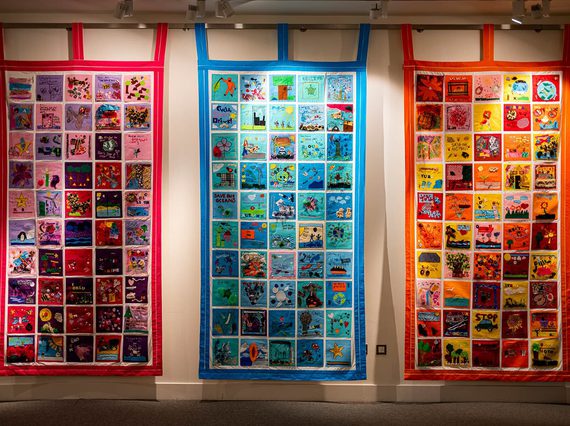
Quilts for Climate Change workshop toolkit
Learn how to run quilt-making workshops at your museum with your communities.
Inspired by Sewing Hope: Quilts for Climate Change, this toolkit provides guidance on how to run quilt-making workshops at your own museum and with your own communities, to help them engage creatively with your collections and climate action.
Using museum collections as inspiration, these quilt-making workshops aim to give children, young people, families and community groups a creative outlet in response to the climate emergency.
Supported by Scottish Government's Climate Engagement Fund, we delivered free, drop-in quilt-making workshops at the National Museum of Scotland and supported seven other museums across Scotland to run their own workshops.
On this page
How to run quilt-making workshops
The workshops can be scaled-up or scaled-down, according to the space, staff and volunteers you have available.
Generally, we have found that workshops work best as drop-in sessions for 50-60 people on a Saturday or Sunday. These workshops will also work for local community groups of around 30 people.
Timescale
Overall, we recommend 3 - 4 months for the planning, delivery and evaluation of the workshops.
- Planning (2 weeks)
Recruit a freelance artist, museum staff and/or volunteers with sewing experience to lead workshops.
Organise workshop venue and dates.
Reach out to volunteers and community groups who may be able to assist with sewing up the resulting quilt banners.
- Preparation and promotion (4 weeks)
Gather recycled textiles and materials.
Source fabric paints, pens, threads and glue.
Promotion work/reaching out to community group participants e.g. inviting local schools, adult learning groups, uniform organisations etc.
- Delivery and evaluation (1 - 6 weeks)
Deliver workshops.
Evaluate success of workshops.
- Feedback analysis (2 weeks)
Analyse feedback from surveys.
Determine social impact of project.
- Sewing quilt squares (4 weeks)
Sew quilt squares together to create quilt banner(s)
Resources and budget
Budget
Where possible, we suggest a £400 budget to enable your museum to pay for additional resources and support to run workshops and make quilt banners.
Staff and volunteers
Much of the work to run the workshops can be achieved by a team of dedicated volunteers and museum staff.
For example, when running our workshops at National Museums Scotland, we worked with:
- Dr Sian Henley (Climate and Ocean Scientist, University of Edinburgh)
- Laura Johnson (a local artist)
- Dianne Miller (a textile tutor from the Edinburgh Remakery).
The squares were then stitched together to form community banners by volunteers and the Edinburgh Remakery.
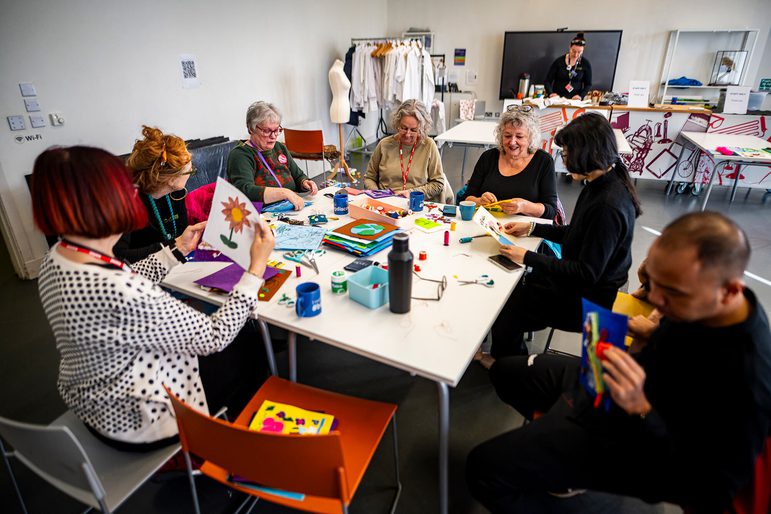
Materials and equipment
Gather materials required for making and decorating quilt squares in the workshops.
Recycling and repurposing materials is a core value of the Sewing Hope project. Aim to use equipment and materials that you already have. Try to gather recycled and repurposed materials from colleagues and partners where you can.
For example, when running our workshops at National Museums Scotland, we used old museum uniforms and collected fabric scraps from colleagues. We gave leftover materials to our Sewing Hope museum partners to run their own workshops.
- Suggested workshop materials
Masking tape
A4 paper for sketching
Recycled card (for stencils)
White chalk
Pencils, sharpeners, erasers and black fine-line pens/markers
Paper scissors
Selection of threads, embroidery threads, needles, pins and threaders
Fabric (base) cut into 25cm squares
Repurposed/recycled textiles
Self-adhesive felt letters
Acrylic paint markers
Tacky glue
A selection of repurposed beads, buttons, ribbons and trims
- Other equipment that may be useful
Several metal rulers and measuring tapes
Selection of small and large fabric scissors
Several pairs of pinking shears
Several eyelet/shape cutters
Equipment for staff and volunteers
For the workshops run at the National Museum of Scotland, only trained staff/volunteers used the following equipment to help workshop participants create their quilt squares:
- Scalpel knife and cutting mat to produce more intricate designs
- Sharper scissors to cut fiddly elements
- Steam iron and board to press squares/design elements
- Sewing machines to stitch layers/elements together
Risk Assessments
If you would like more information on our Risk Assessments for these workshops, please contact the Learning & Engagement team at National Museums Scotland at publicevents@nms.ac.uk.
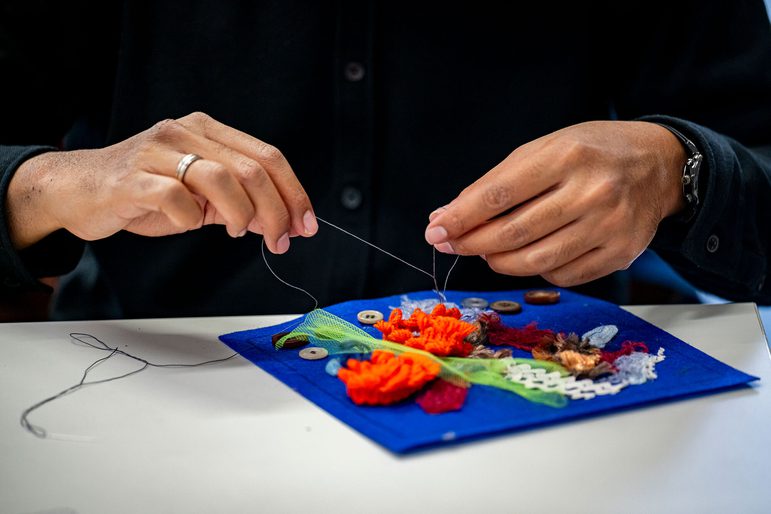
Workshop preparation
Use collections for inspiration
Participants will use their quilt squares to create artworks inspired by your museum’s collections. Through the squares they will share a message of hope for the future of the planet and/or messages relating to actions they will take towards this future.
Gather the following to help inspire participants:
- Handling objects
- Printed images of relevant collection objects
- Stencils based on relevant collection objects
Discussion questions
Gather prompt questions to help participants think about what message or climate action they want to share on their quilt square, such as:
- What does climate change look like to you?
- What is your hope for the future?
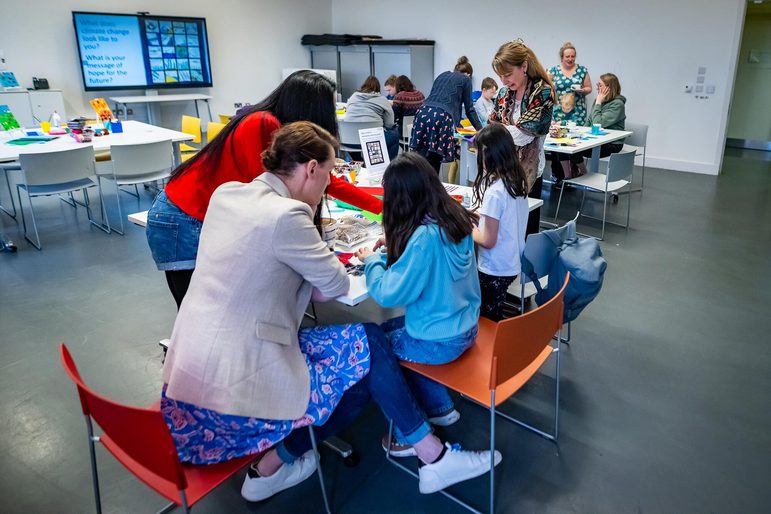
Making the quilt squares
Basic instructions
Prepare instructions (on cards, or a PowerPoint) for the workshop participants. For example:
- Choose your base colour for the quilt square
- With white chalk, use a ruler or the cardboard tracer to mark a border 1cm in from the edge of the quilt square
- Outline and cut out your images from fabric pieces
- Stitch or glue your fabric pieces and decorations to your squares.
Encourage participants to use simple images and bold designs.
Get creative
These are some other ideas for how participants can create their quilt squares:
- Draw around card/wood stencils on fabric
- Draw on the fabric using non-toxic markers
- Paint fabric using non-toxic fabric paints
- Cut fabric shapes out using fabric scissors
- Fix designs onto backing square using non-toxic glue or double-sided tape
- Stitch fabric pieces together using needle and thread (Age 7+)
Image gallery
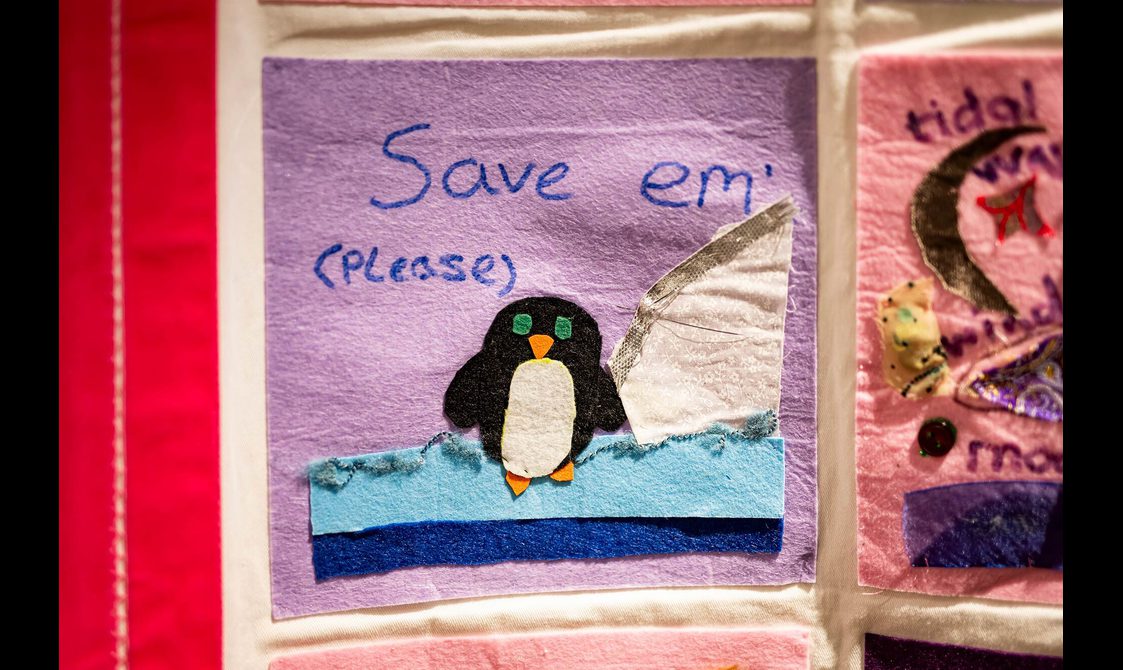
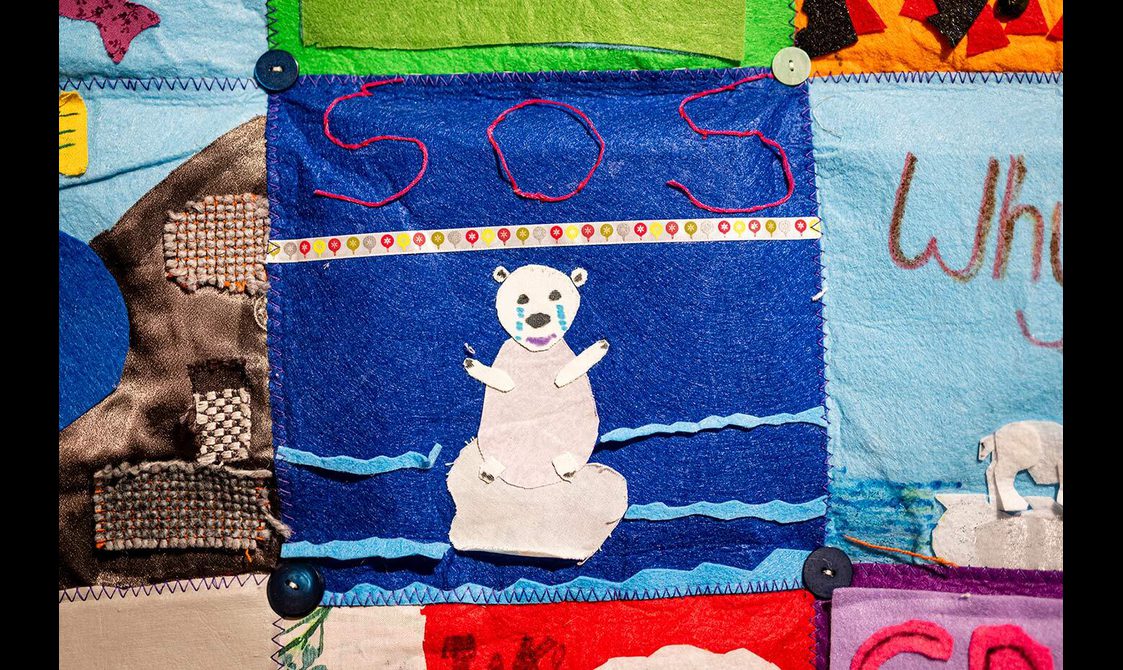
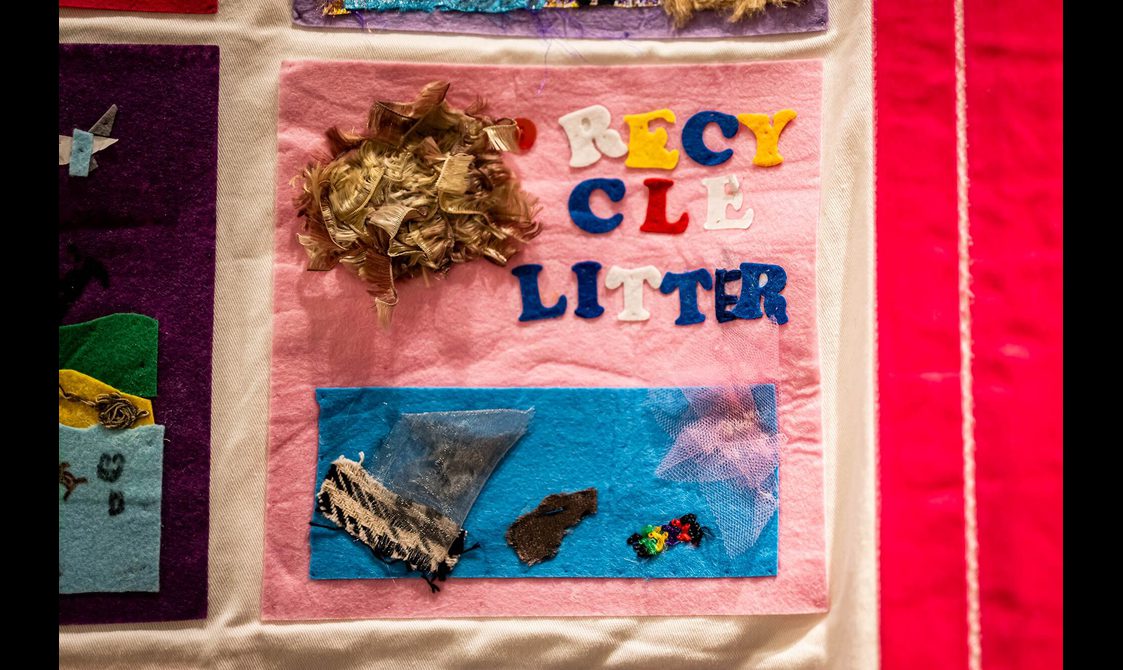
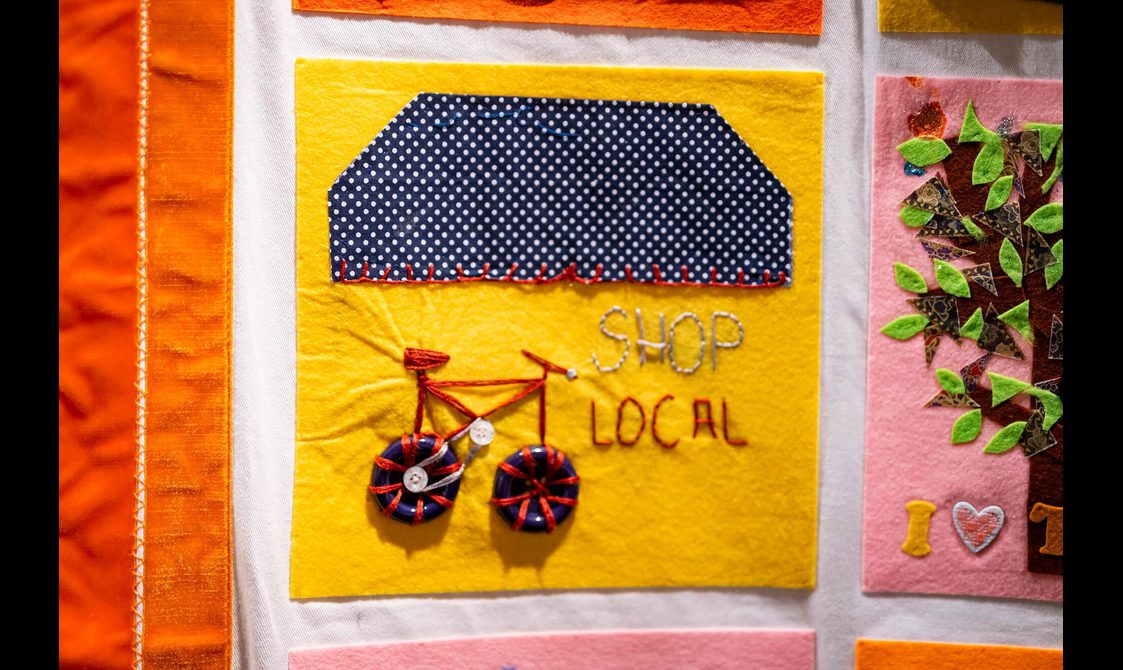
Quilt assembly and display
The quilt squares can be stitched together to make a banner either during the workshops or afterwards. This will depend on the skills and experience of your workshop participants, and the space and time you have available.
At National Museums Scotland, the squares were stitched together by volunteers and the Edinburgh Remakery.
Image gallery
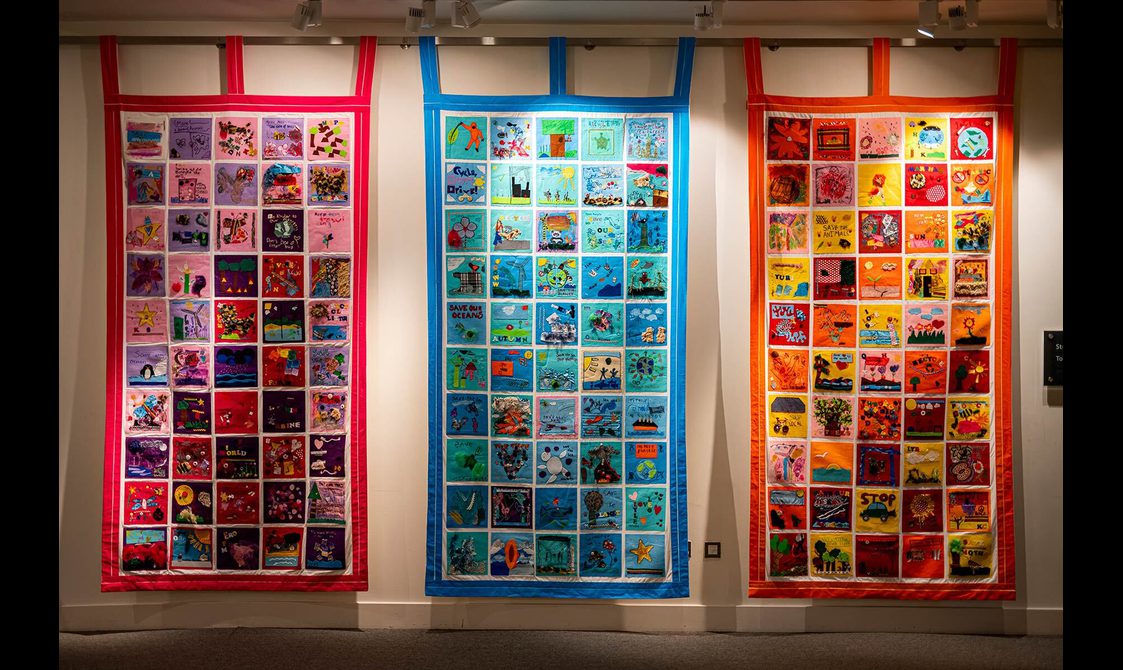
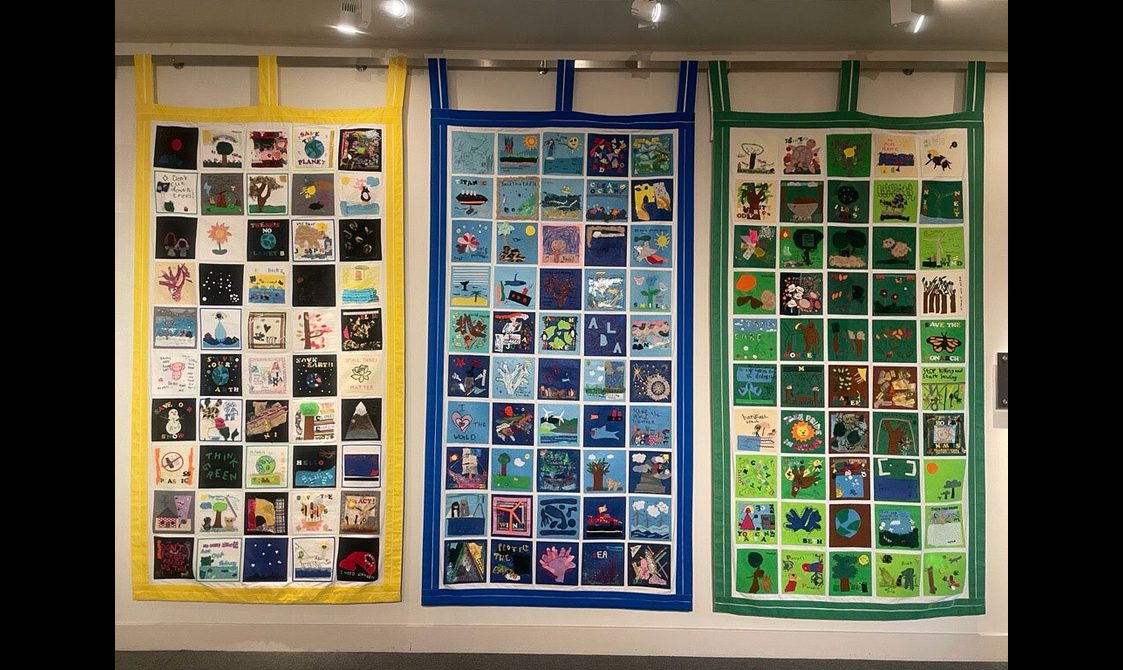
We recommend thinking about how you will display and promote the quilts when they are finished. We found that many of the participants in the Sewing Hope workshops appreciated returning to the museum with their family and friends to see their quilt square on display as part of a larger quilt.
Evaluating workshops
Participant feedback
It is important to capture feedback from workshop participants about their experience of making the quilt squares.
National Museums Scotland and our Sewing Hope partner museums were particularly interested in finding out the impact the project had on people’s attitudes towards climate change, sustainability, sewing and the museum’s collections.
Many shared that it sparked meaningful conversations with family and friends about sustainability and climate action. ... Additionally, several participants expressed a newfound interest in discovering practical steps they can take to contribute to a more sustainable future. The workshop was a fantastic way to inspire action and awareness through creativity!
The Great Tapestry of Scotland
After the workshop, there was a distinct shift in the participants’ perspective. Many felt more empowered and optimistic about the role they could play in addressing climate change. They began to understand that even small, everyday actions—such as reducing waste, conserving energy, and supporting sustainable practices—can contribute meaningfully to the fight against climate change.
The Devil’s Porridge Museum
Post-it notes
One way we recommend gathering feedback is by encouraging participants to write their thoughts on a flipchart or sticky notes during the workshops.
You can ask prompt questions, such as:
- Before taking part in this workshop, how are you feeling about the climate challenges facing our planet?
- After taking part in this workshop, how are you feeling about the climate challenges facing our planet?
- What next? Is there anything you now feel inspired to do to help impact a positive climate future for our planet?
- Share your thoughts about actions we could take to help share a positive climate future for our planet.
Feedback forms
You might also ask participants to complete an online or handwritten feedback form after the workshops. You can ask structured questions about the impact of the workshop, such as:
- How did you find out about this event?
- What were your main reasons for participating?
- What did you enjoy most about the 'Sewing Hope: Quilts for Climate Change' activities?
- Having taken part in Sewing Hope: Quilts for Climate Change, are you now inspired to do any of the following?
- Talk about the activity topics with family and friends
- Spend some time looking at objects relating to sustainability and the natural environment and/or textiles and technology on display in the museum
- Find out more about actions I can take to help shape a positive climate future for our planet
Surveys submitted to National Museums Scotland revealed that one of the benefits of the workshop for participants was that it was a ‘calming and creative activity’.
Pupils surveyed by Paxton House and the Arctic Convoy Museum highlighted the potential of the workshops to raise awareness of climate change challenges and solutions.
Analysing quilt squares
Analysing the words participants include in their quilt squares can provide helpful insights into their feelings towards the climate and sustainability.
At National Museums Scotland we identified the repetition of the word ‘save’ on the quilt squares. This word was used to emphasise the central message of environmental preservation, love for nature, and the need for collective action to protect our planet and its ecosystems.
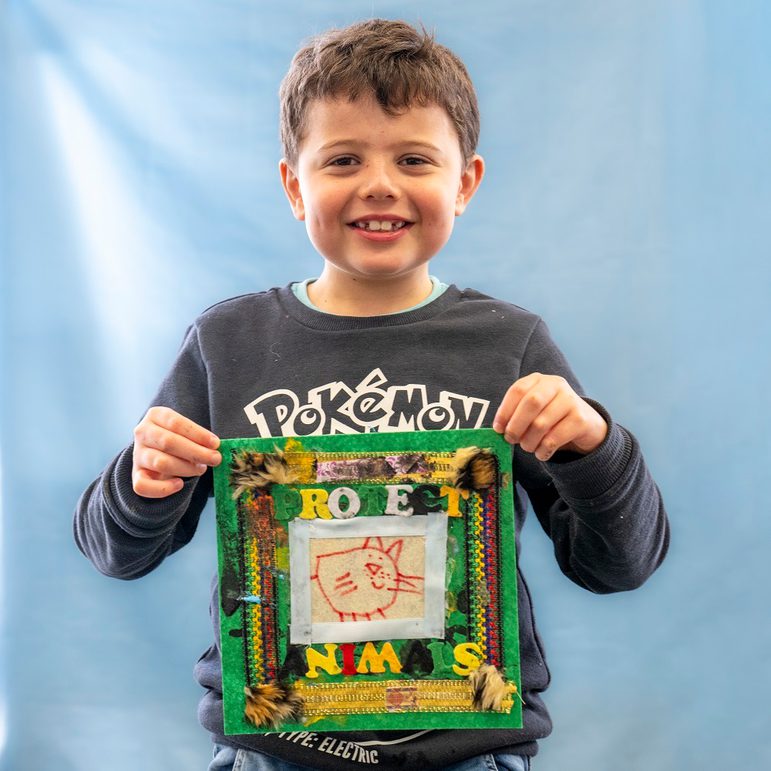
Thanks to
Thank you to the Scottish Government's Climate Engagement Fund for supporting the Climate Change for All project and to our Sewing Hope museum partners across Scotland:
- The Great Tapestry of Scotland
- Paxton House
- The Devil’s Porridge Museum
- Kilmartin Museum
- West Highland Museum
- Arctic Convoy Museum
- Strathnaver Museum.